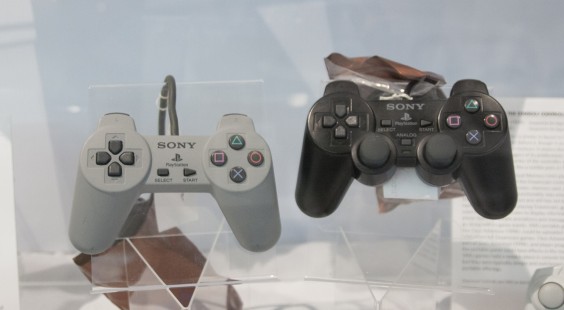Evolution of the Console Controller – PlayStation Controller (1994), DualShock Controller (1997)
Management wanted a flat controller, but Sony’s president Norio Ohga supported designer Teiyu Goto’s new controller design with grips on the ends. Ohga, a pilot himself, told Goto “the control stick is the most important part of any game” and liked the grips because they gave the gameplay a 3-D feel. Goto assigned symbols and colors to the basic functions: a green triangle shows viewpoint and represents the player’s head, a blue square represents a piece of paper, hence the menu, and a red circle and a blue X represent yes and no. Ultimately, the uses for buttons varied by region. English and other European releases use X for select and O for cancel, while other versions use the reverse.
Although the PlayStation was intended for 3D gameplay from release, the controller was not better suited to 3D environments than earlier 16-bit era versions, so Sony developed and released the Dual Analog and DualShock controllers, both featuring analog sticks. The Dual Analog Controller without force feedback was sold for only a short time. The DualShock features two vibration motors of different intensities and two analog sticks. No buttons were included beyond those on the original PlayStation controller.
Up to Analog Era – Back to Sega Saturn 3D – Forward to Sega DreamCast
Gift of Sony Entertainment, 2012.024.002, 2012.024.003

